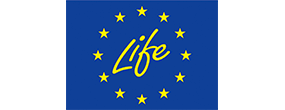Overview
Malta has continued to experience remarkable population and economic growth; in 2022, GDP (at constant prices) was 25% higher than pre-COVID 2019 level. Concurrently, primary (PEC) and final energy consumption (FEC) registered an increase of 7% and 8% respectively from 2019. FEC sectoral breakdown has largely remained the same, with road transport consuming the largest portion of energy (43% in 2022), followed by the tertiary and the residential sectors (21% and 19% respectively). Energy consumption in the road transport sector is attributed to high private vehicle dependency; despite being complemented by public transport and cycling. However, train or tram services remain non-existent. Increase in standard of living conditions has also contributed to further energy consumption increases.
Figure 1: Final energy consumption by sector (with climatic corrections)
Source: ODYSSEEWhile there is a net increase in energy consumption between 2000 and 2022, technical energy efficiency index (Figure 2) shows a decrease from 100 in 2000 to 66 in 2022, representing an increase in energy efficiency by 34%, which can be attributed to a higher uptake of more efficient technologies. To note that the initial steep decline in the energy efficiency index between 2000 and 2005 may be attributable to unreliable pre-2005 data. Nevertheless, there is still a general increase in efficiency post 2005.
Figure 2: Technical Energy Efficiency Index
Source: ODYSSEEFigure 3 shows that the increase in total energy supplied from 2000 levels has been more than twice than the increase in final consumption (0.11 Mtoe vs 0.28 Mtoe). The increase in final energy consumption is attributed to economic, population growth and increased comfort demands. Nevertheless, during the same period there was a notable reduction in the consumption of the power sector (-0.16 Mtoe), due to fuel switching (change from Fuel Oil to LNG for power generation), power imports following the construction of an electricity interconnector with Italy, as well as the increase in share of renewables, predominantly solar photovoltaics.
Figure 3: Main drivers of the total energy supply variation
Source: ODYSSEEPast efforts to improve the country’s energy efficiency and renewable energy mix are bolstered through Malta’s National Energy and Climate Plan (2021-2030), which includes both the extension and implementation of new policy measures. These include additional energy efficiency measures promoting sustainable growth, and efforts to keep a stable energy demand in light of increasing socio-economic pressures, notably population and economic growth.
Table 1: Sample of cross-cutting measures
| Measures | NECP measures | Description | Expected savings, impact evaluation | More information available |
|---|---|---|---|---|
| Energy Efficient Street Lighting | Yes | This measure aims to continue investing in energy efficient street lighting systems and replace present lighting luminaires with LEDs. | 0.684 TJ | Link |
| Projects in primary water network and wastewater treatment plant | Yes | Water Services Corporation, the Government-owned water utility, will be carrying out projects in the primary water network and wastewater treatment plant, which are expected to lead to energy savings. | 5.508 TJ | Link |
Buildings
While there was a notable increase in energy efficiency across the Residential and Services Sectors, there was also a notable increase in FEC of these sectors attributed to economic and population growth. Despite the increase in population between the years 2000 and 2010, a slight decrease in Residential FEC was observed. This could be attributed to the effects of energy price increases and the 2008-2009 global financial crises. However, 2019 and 2022 FEC showed a significant increase in both Residential and Services Sectors compared to 2000. To also note that in 2022 marginal increases in energy consumption compared to 2019 may be also linked to the rebound of the economy post the COVID 19 pandemic.
Figure 4: Final energy consumption in buildings (with climatic corrections)
Source: ODYSSEEFigure 5 below further highlights the increase in energy consumption in households by end-use. This is notable through the increase in space heating, space cooling and electrical appliances due to an increase in standards of living and thermal comfort. Water heating end-use is gradually decreasing because of the increase in energy efficient technology uptake which is slowly offsetting the increase in demand.
Figure 5: Energy consumption by end-use of households (with climatic corrections)
Source: ODYSSEEConsumption per dwelling, as shown in Figure 6 below, has progressively increased since 2016, mainly due to an increase in space heating and cooling demand, and an increase in consumption by electrical appliances as highlighted in Figure 7. This increase is attributed to an increase in population, and higher standards of living. Despite this, Malta has the lowest final energy consumption per dwelling within the EU (i.e., 0.52 toe/dwelling in 2022).
Figure 6: Energy consumption per dwelling
Source: ODYSSEEIt should be noted that while distinct increases in energy consumption for space heating, space cooling and for electrical appliances were observed, there have also been slight decreases in other end-uses. For instance, in 2022 water heating consumption showed a decrease from 2019 levels, due to an increased uptake of more efficient water heating technologies. Once again, pre-2005 data should be interpreted with caution.
Figure 7: Energy consumption per dwelling by end-use
Source: ODYSSEEFigure 8 below further emphasizes the increases in energy consumption highlighted previously with the highest increase being denoted for space cooling and electrical appliances.
Figure 8: Electricity consumption per dwelling by end-use (with climatic corrections)
Source: ODYSSEEFigure 9 reflects the impact of the increase in the number of dwellings (denoted as “More Dwellings”) and in personal comfort demands and in the consumption of ambient heat pumps (denoted in “Others”, of which around 75% is comfort and 25% is ambient heat). However, the energy savings achieved are offsetting most of the energy consumption increase.
Figure 9: Main drivers of the energy consumption variation in households
Source: ODYSSEEA slight increase in the climate effect from 2000 levels was observed, suggesting increased economic affordability and personal comfort demands. Increase heat pump uptake is believed to be driven by economic growth together with the construction of more efficient buildings. Energy efficiency improvements were largely offset by ‘Other’ impacts (e.g., behavioral and ambient heat). To note that central heating in Malta is negligible.
Figure 10: Main drivers of the space heating consumption variation of households
Source: ODYSSEEFigure 11 shows a progressive decrease in both electricity unit consumption and total energy consumption per employee for the Services sector in 2019 when compared to values in 2010. Years 2020 and 2021 show the impact of the COVID-19 pandemic, while 2022 shows steady growth back to 2019 levels. Once more, pre-2005 data should be interpreted with care.
Figure 11: Energy and electricity consumption per employee in services (with climatic corrections)
Source: ODYSSEEAs mentioned in the Overview section, Malta’s National Energy and Climate Plan (2021-2030) includes both existing as well as new energy efficiency measures to achieve energy savings in the end-use sectors. For the Residential, Industry and Services sectors in particular, the Government has proposed numerous measures to promote the shift towards renewable technologies and other energy efficient technologies. One such example is the Electricity Tariff Structure and Eco-Reduction measure which aims to incentivize end-users to reduce consumption below an established threshold and deter high consumption by increasing unit cost as consumption increases through a rising block tariff structure.
Table 2: Sample of policies and measures implemented in the building sector
| Measures | NECP measures | Description | Expected savings, impact evaluation | More information available |
|---|---|---|---|---|
| Electricity Tariff Structure & Eco-Reduction | Yes | This measure aims to incorporate a mechanism which incentivizes end-users to reduce consumption below an established threshold and deter high consumption by increasing electrical unit cost as consumption increases. | 25.704 TJ | Link |
| Solar Water Heaters / Heat Pump Water Heater Scheme | Yes | Malta will launch new schemes post-2020 to incentivize the installation of solar water heaters and heat pump water heaters in the residential sector. The support scheme will be revised for financial assistance to be received as a rebate after the purchase. | 3.168 TJ | Link |
| End use water savings | Yes | A long-term national water conservation campaign which consists of disseminating water saving kits among other activities. The reduction in water consumption is resulting in lower electricity demand in households (less hot water demand) and in reduced electricity demand for water production. | 5.22 TJ | Link |
Transport
The transport sector is the highest energy consuming sector even when excluding international aviation. Similar to previous years, passenger cars remained the highest energy consuming transport mode (around 60%) followed by trucks and light vehicles, as well as domestic nagivation and buses.
Figure 12: Transport energy consumption by mode
Source: ODYSSEEFigure 13 below illustrates the high dependency in personal transportation which results in lengthier travel times due to increased road congestion and thus, increased fuel consumption.
Figure 13: Energy consumption of cars per passenger-km
Source: ODYSSEEWhile Malta’s dependency on private car use is high, efforts are being made to further encourage modal shift. Measures to encourage modal shift include the promotion of remote working, and the provision of free public transport and free school transport for primary and secondary school children, among others. Besides promoting modal shift, the Government is committed towards electrifying its vehicle fleet to improve vehicle efficiency and reduce overall emissions. Electrification of transport is also being encouraged through grants for the purchase of private electric vehicles and the deployment of public charging infrastructure.
Table 3: Sample of policies and measures implemented in the transport sector
| Measures | NECP measures | Description | Expected savings, impact evaluation | More information available |
|---|---|---|---|---|
| Free Transport for Youths, Students and School Children 2 | Yes | This measure aims to encourage modal shift from private vehicle use to collective transport through the provision of free transport for primary and secondary school children. | 3.672 TJ | Link |
| Continuation of EV Grants and Electromobility Action Plan | Yes | This group of measures facilitates the replacement of inefficient ICE vehicles to either more efficient ICE vehicles or EV vehicles. This is implemented through two schemes – the vehicle scrappage scheme and the EV grant scheme. | 11.196 TJ | Link |





